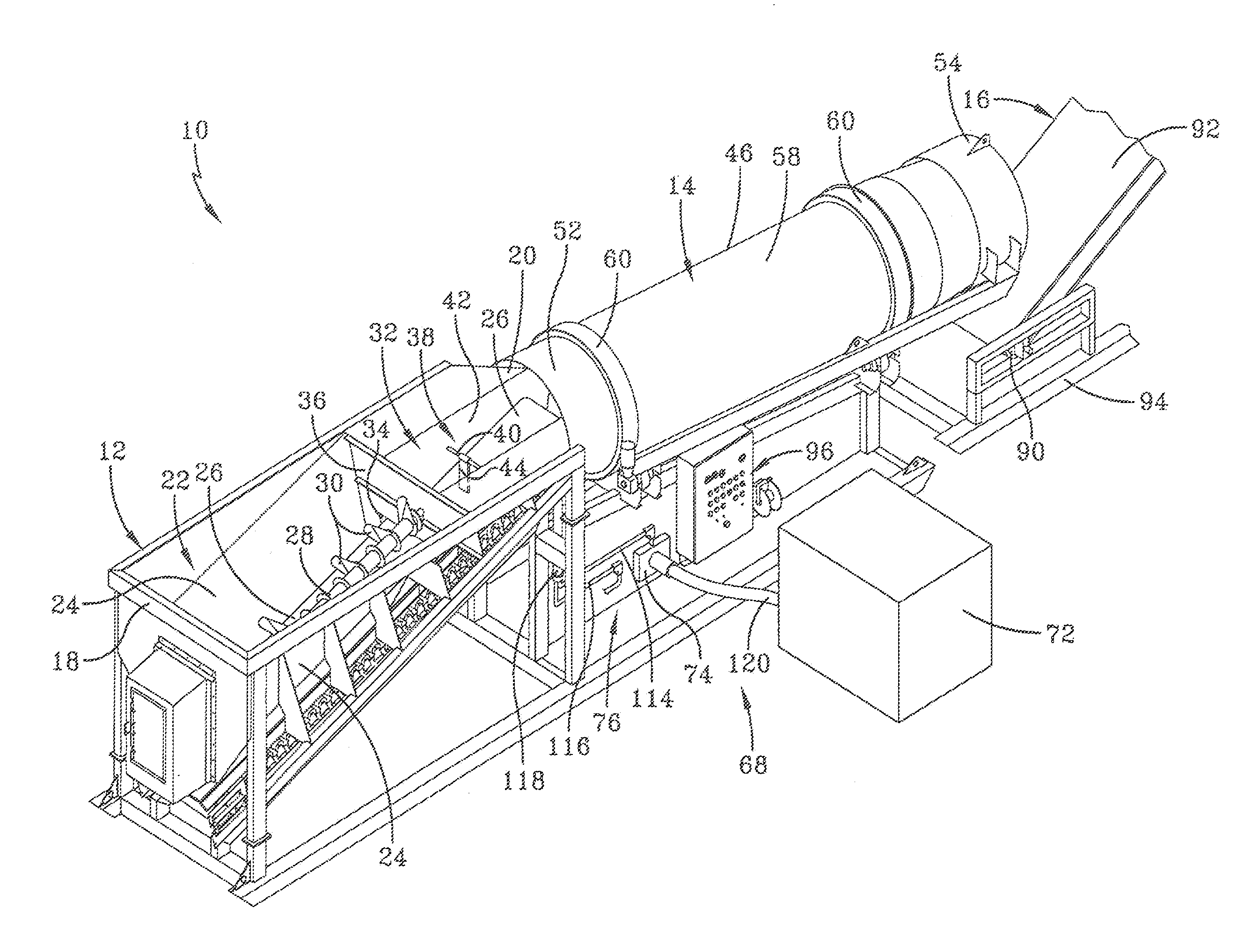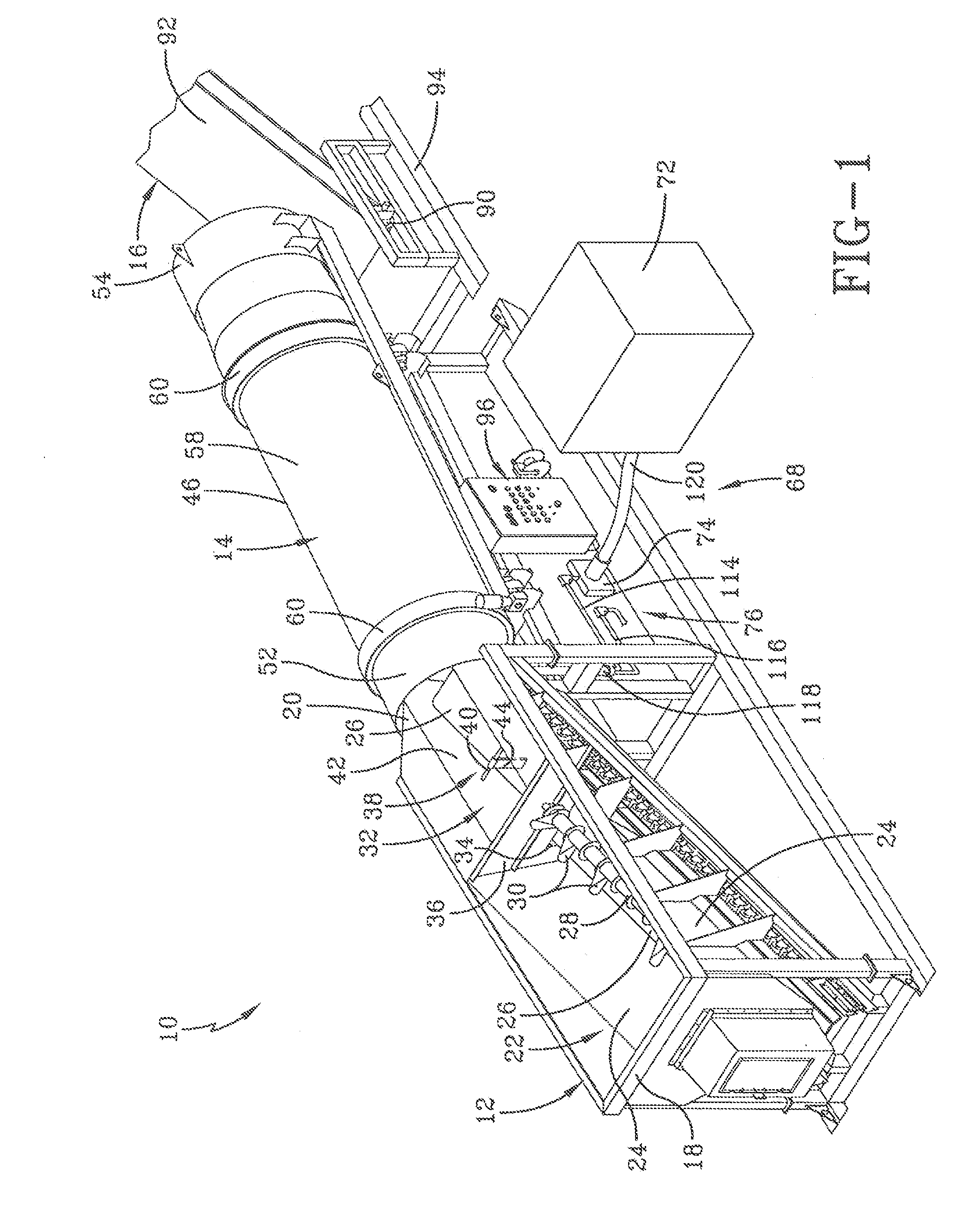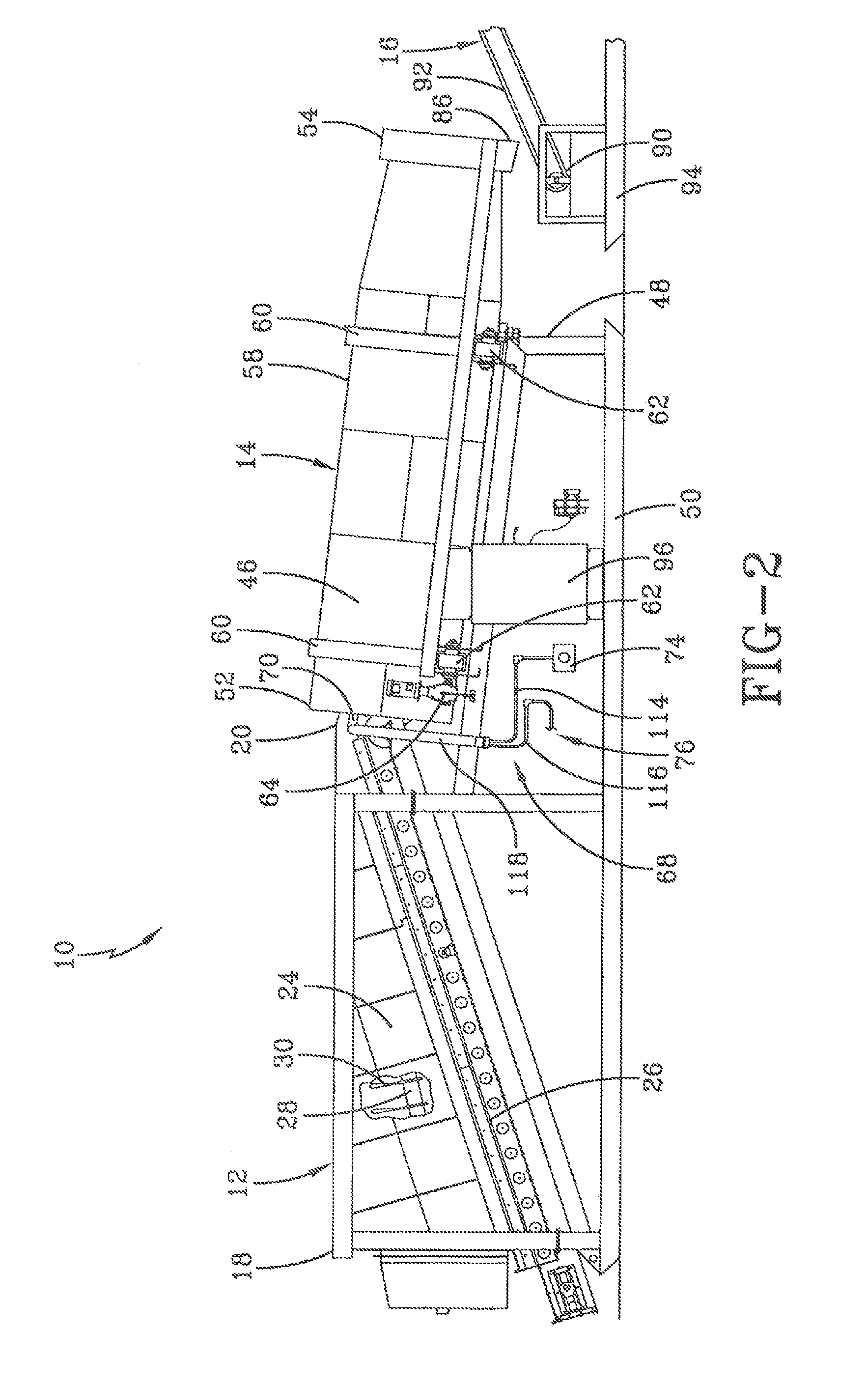Apparatus and method for coloring landscape material
a technology of artificial coloring and landscape material, applied in the direction of spraying apparatus, liquid surface applicator, pretreated surface, etc., can solve the problems of increasing the difficulty of artificial coloring of mulch, affecting the quality of landscape materials, etc., to achieve the effect of reducing process problems and high throughput ra
- Summary
- Abstract
- Description
- Claims
- Application Information
AI Technical Summary
Benefits of technology
Problems solved by technology
Method used
Image
Examples
first embodiment
[0030]Turning now to the drawings, wherein the illustrations are provided to show preferred embodiments of the invention and not to limit the same, the coloring system of the present invention is indicated generally at 10 and is shown in FIGS. 1 and 2. Coloring system 10 includes a feed hopper 12, a trommel 14 and a conveyor 16. Uncolored mulch is placed in feed hopper 12, conveyed to trommel 14 for coloring, as will be described in detail below, and discharged onto conveyor 16 for removal.
[0031]Feed hopper 12 preferably is a constant-flow hopper that delivers a relatively steady flow of mulch to trommel 14. Feed hopper 12 includes a feed end 18 and a discharge end 20. Uncolored mulch (not shown) is placed in a bin 22, which is formed in hopper 12 proximate feed end 18. The mulch may be dumped into bin 22, or alternatively, mulch may be continually conveyed into the bin through a delivery system known to those skilled in the art. To accommodate batches of mulch, bin 22 preferably in...
second embodiment
[0057]A discharge chute 154 is located at discharge end 150 of trommel drum 146, directing the colored mulch out of the drum onto discharge conveyor 136. A third additional aspect of second embodiment coloring system 130 is the structure and position of discharge chute 154, which extends into drum 146 in an angular manner. That is, discharge chute 154 is angled downwardly as it extends past discharge end 150 of drum 146. With discharge chute in trommel drum 146 and angled downwardly toward discharge conveyor 136, the colored mulch is transferred more efficiently from the trommel drum onto the discharge conveyor.
[0058]A fourth additional aspect of second embodiment coloring system 130 is an attachment arm 156 for discharge conveyor 136. Discharge conveyor 136 is pivotally attached to trailer 138 for ease of transport. When second embodiment coloring system 130 is in use, discharge conveyor 136 is lowered to a desired angle and attachment arm 156 engages a frame beam 164 to secure the...
PUM
 Login to View More
Login to View More Abstract
Description
Claims
Application Information
 Login to View More
Login to View More - R&D
- Intellectual Property
- Life Sciences
- Materials
- Tech Scout
- Unparalleled Data Quality
- Higher Quality Content
- 60% Fewer Hallucinations
Browse by: Latest US Patents, China's latest patents, Technical Efficacy Thesaurus, Application Domain, Technology Topic, Popular Technical Reports.
© 2025 PatSnap. All rights reserved.Legal|Privacy policy|Modern Slavery Act Transparency Statement|Sitemap|About US| Contact US: help@patsnap.com



